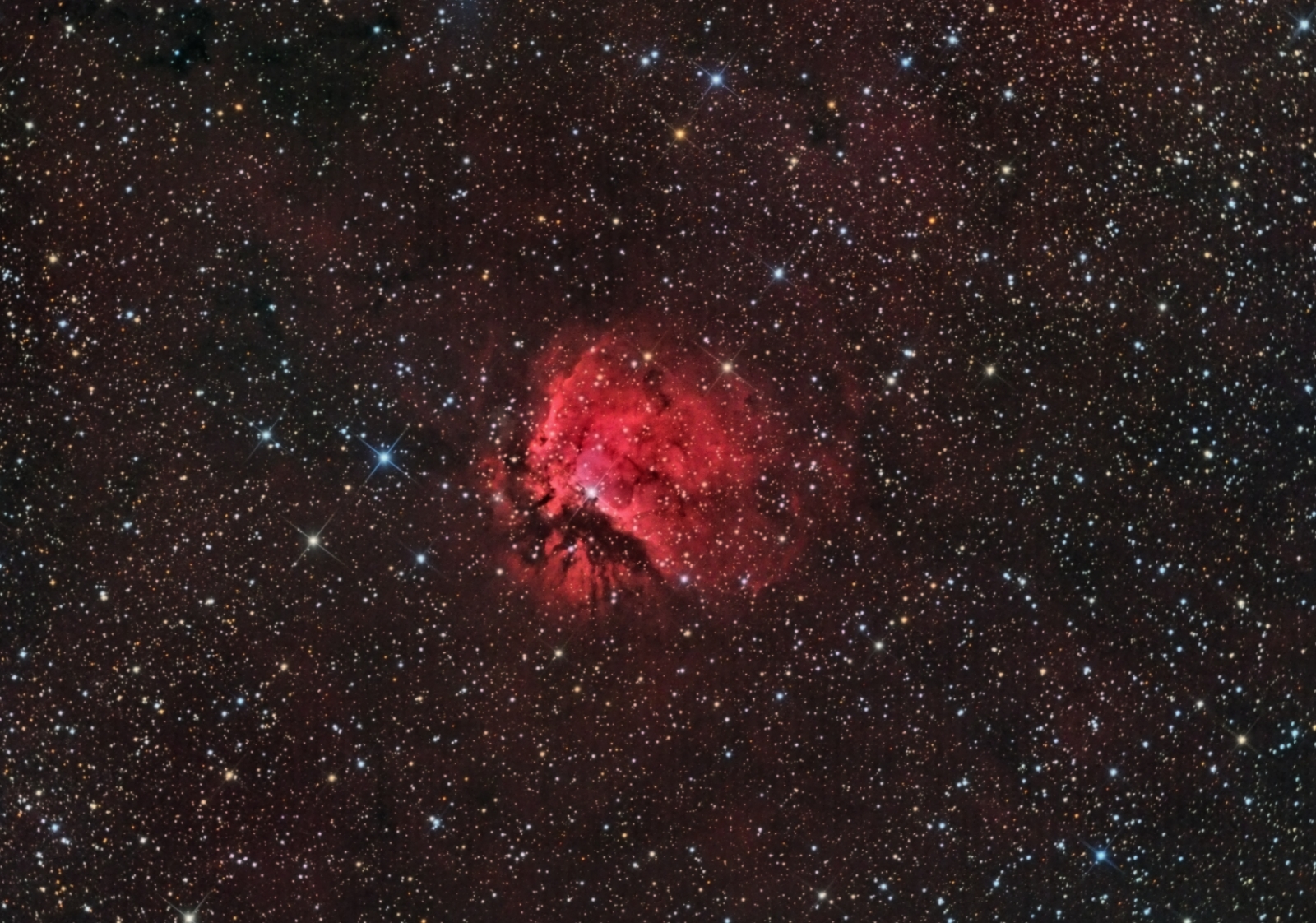Sh2-112 Emission Nebula
 Click image for full size version
Click image for full size version
February 8, 2015
Sh2-112 lies about 5.600 light years from Earth in Cygnus, the Swan It’s not far from the North America Nebula, but twice as far away. This whole area of Cygnus is dominated by the Milky Way and is awash in faint nebulosity, as can be seen in this image. The nebula is illuminated by BD+45 3216, the bright star at its centre, which is about 30x the size of the Sun. This nebula does not seem to be a particularly popular imaging target, though I am not sure why. It is quite beautiful.
Tekkies:
SBIG STL-11000M camera, Baader LRGB filters, 10″ f/6.8 ASA astrograph, MI-250 mount. Guided with STL-11000’s external guider and a 500mm f.l. Lumicon guide scope. Focus with FocusMax. Acquistion, guiding and calibration with Maxim-DL. All registration, integration and processing with PixInisight. Shot from my SkyShed in Guelph, Ontario. No moon, excellent transparency, average seeing, no clouds.
22x3m R and B, 21x3m G and 30x10m Ha (total 8hr25m).
Synthetic Luminance:
Creation and cleanup: The R,G,B and Ha masters were combined using the ImageIntegration tool (average, additive with scaling, noise evaluation, iterative K-sigma / biweight midvariance, no pixel rejection). DBE was applied to neutralize the background.
Deconvolution: A star mask was made to use as a local deringing support. A copy of the image was stretched to use as a range mask. Regularized Richardson-Lucy Deconvolution was applied (75 iterations, external PSF made using DynamicPSF tool with about 30 stars).
Stretching: HistogramTransformation was applied using autostretch settings from ScreenTransferFunction.
Ha, R, G and B masters were cropped to remove edge artifacts from stacking. The R, G and B channels were combined to make an RGB image. Ha and RGB were processed with DBE, ColourCalibration was applied, and the Ha and RGB were combined with the NB-RGB script. HistogramTransformation was applied using autostretch settings from ScreenTransferFunction.
The luminance was extracted from the HaRGB image, processed and then added back into the HaRGB image as follows:
1. Extract luminance from the HaRGB image.
2. Apply LinearFit using the SynthL channel as a reference.
3. Use ChannelCombination in the Lab mode to replace the luminance of the HaRGB with the fitted luminance from step 2.
4. Use LRGBCombine to apply SynthL to the HaRGB image.
Additional Processing
Noise Reduction and Re-Stretch: TGVDenoise was applied in Lab mode with 300 iterations with a range mask used to protect nebula and stars. This was followed by a HistogramTransformation to raise the black point (but with no clipping).
Dark Structures: DarkStructureEnhance script was applied with a strength of 0.1.
Star Reduction and Colour Adjustment: Morphological transformation (3×3, 4 iterations, strength 0.15) was applied using a star mask to protect background and nebula. Luminance was extracted from the image and LinearMultiscaleTransform was applied to extract the first 4 wavelet layers (no residual). This image was used as a mask when applying ColourSaturation to boost colour in the star cores.
Final Steps: Curves was applied to adjust saturation and contrast, and the image was down sampled by a factor of 2 using the Resample process.
Image scale is about 2.2 arcsec per pixel for this camera / telescope / rescaling combination.






very beautiful stars and color. I love the colors as you do them. congratulation.
Thanks!
Thanks!
Clear skies,
Ron